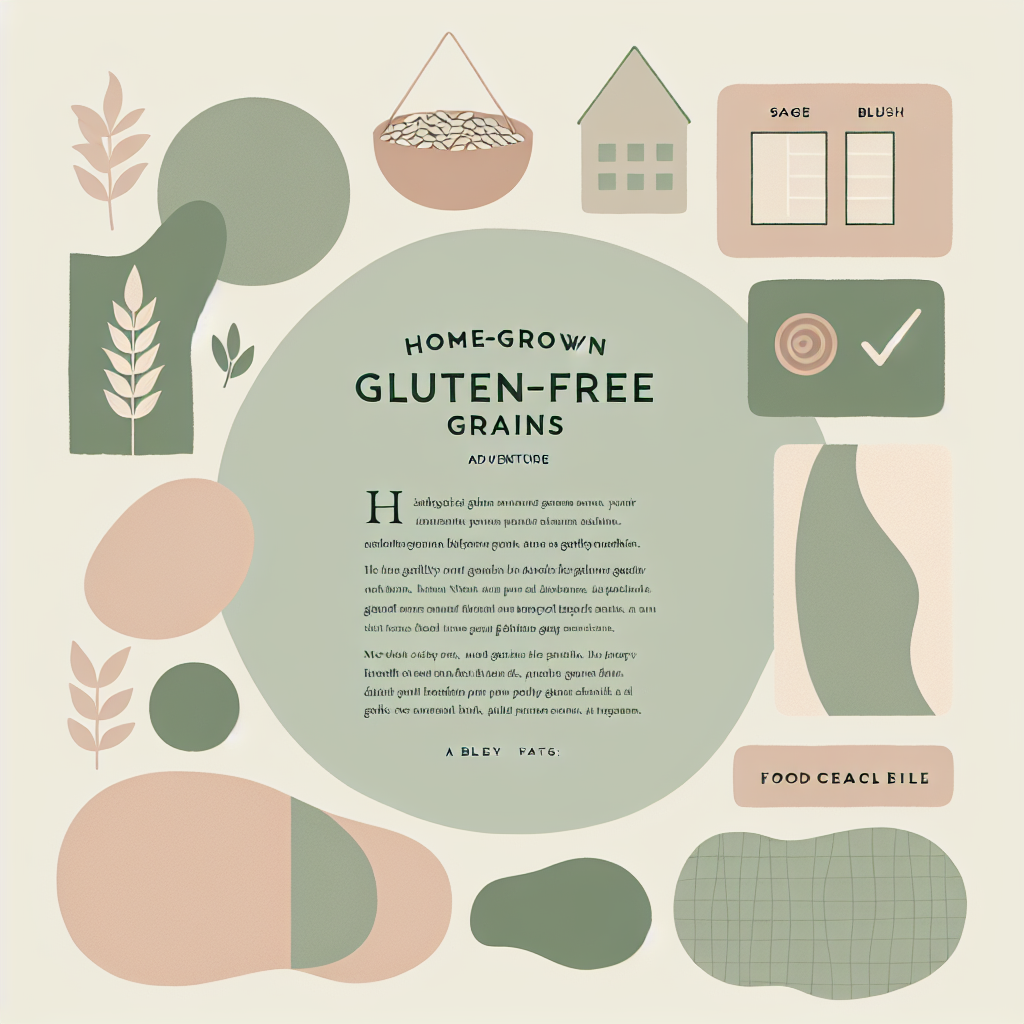Welcome to another exciting page in your gluten-free journey! Isn’t it wonderful how we’ve together navigated through different aspects of our gluten-free lifestyle – from mastering the science behind gluten-free baking to managing your budget while embracing new dietary needs? We’ve made some amazing gluten-free discoveries together, and today, we’re opening up a new chapter.
Given that a significant portion of our readers live in compact city apartments, today we’ll branch out to the topic of gardening and discuss the fun and economic benefits of growing your own gluten-free grains at home. Yep, you heard that right, my readers with a green thumb! You don’t need sprawling acres of land; even your tiny apartment balcony space or your sunny windowsill can be your personal farm.
Growing your own food can be incredibly rewarding. Not only do you get to flex your green thumb, but there’s also something truly special about creating a meal from ingredients grown with your own love and dedication. Best of all? You always know exactly what’s going into these grains – ensuring they’re free from gluten cross-contamination.
When we think about gluten-free grains, our minds may instantly wander to market-purchased packets of quinoa, rice, or cornflour. While the gluten-free aisle at the supermarket has been our trusted companion so far, have you ever thought about the journey these grains take from field to store? Together, let’s explore how embracing home-growing can benefit your health, wallet, and overall lifestyle.
Foremost is the advantage of ensuring your grains are truly gluten-free. Commercial agriculture often involves crop rotation and co-mingling, where the same fields and equipment may be used for different crops, including those containing gluten. Despite careful manufacturing processes, traces of gluten may persist, posing a risk for those strictly living gluten-free. Growing your own gluten-free grains reassures that these are produced in a completely controlled environment away from any such contamination risks.
Let me ensure from the outset that starting a home garden is not as daunting as it may sound. We’ve worked through tougher kitchens grids, haven’t we? Start small with one or two varieties and slowly expand your green inventory based on what you learn along the way. Although we can’t grow every type of grain in our home gardens, there are a few great options. Buckwheat, amaranth, and millet are wonderful choices as these are relatively easy to grow and packed with nutrition.
Buckwheat is often mistaken for a grain, but it is technically a seed from a flowering plant. This fast-growing plant is perfect for beginners. Just sow the seeds in the spring, and in a few short months, you can reap a healthy, gluten-free harvest! You’ll also experience the joy of witnessing the beautiful white flowers it produces – an excellent sight for your balcony garden.
Amaranth, an ancient grain, is another easy-to-grow plant, thriving in most soil types. These gorgeous plants can also bring a pop of color to your balcony or windowsill, as they have stunning purple, red, or gold flowers. Not to forget, amaranth leaves make for a nutritious and quick addition to your salads, sandwiches, or sautés.
Finally, millet, which although slightly more demanding, is another excellent small-scale crop. Characterized by tiny, bead-like grains, millet is heat and drought-resistant, making it a good option for those living in warmer climates.
Remember when we talked about decoding gluten-free flours and how each has its unique nutrient profile? Similarly, each of these home-grown grains come with the bonus of added nutrients, particularly fiber, B vitamins, and iron – an excellent addition to our gluten-free diet!
Occasionally, we’ve all been met with skeptics who press the misconception that gluten-free is synonymous with nutrition-deficient. As champions of the gluten-free lifestyle, we’ve seamlessly debunked this notion through healthy, wholesome recipes and a well-balanced gluten-free meal planning guide. Now, with your home-grown, nutrient-packed grains, you can confidently continue to affirm the nutritious richness of a gluten-free diet.
Another perk from home-growing is the cost-savings that come with it. Seeds and seedlings are incredibly reasonably priced, especially when you consider the amount of grain they can produce. Considering gluten-free products often come with a higher price tag, growing some of your staples can give your budget a well-deserved break.
As your garden flourishes, consider branching off to companion planting – growing different plants close together for mutual benefit. For instance, pair your buckwheat with strawberries. While buckwheat attracts pollinators, strawberries repel harmful insects, creating a symbiotic relationship between the two. What a fun way to sneak in some fresh fruits or even herbs and spices into your home garden!
Now, if you’re slightly apprehensive thinking about the technicalities of harvesting and processing these grains, we’re here to assure you that with a few simple steps and tools, you can easily convert your balcony-grown grains into ready-to-cook ingredients. There are ample resources and instructions available online, and you can always reach out to your gluten-free community – who knows, your balcony garden might ignite a trend, and we’ll have our flurry of home-grown, gluten-free grain recipes!
Now you’re all set to start your gluten-free grain garden adventure! Imagine the delight of cooking your first meal using buckwheat or amaranth from your balcony garden. The taste of home-grown grains is a tantalizing promise of the freshness and richness that only something nurtured with your care can have.
Of course, we’re not suggesting that you replace all your store-bought grains with home-grown ones but think of this as an expansion to your gluten-free lifestyle, enhancing your connection with nature, giving you control over contamination, and giving an exciting twist to your kitchen adventures. Plus, who would want to miss out on the joy and pride of saying, “I grew this myself!”
**Category: Lifestyle & Social**


